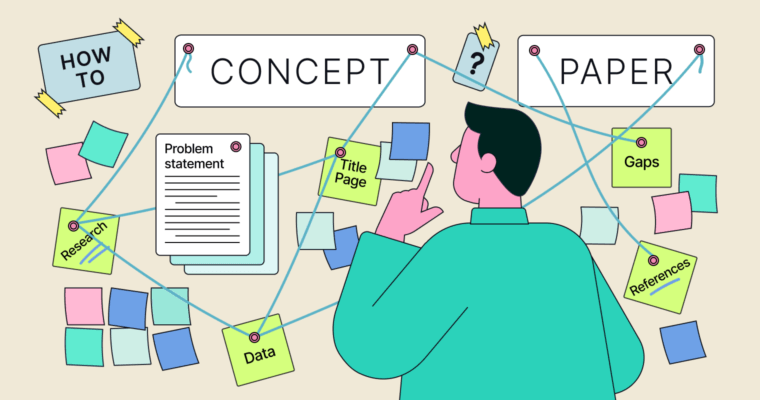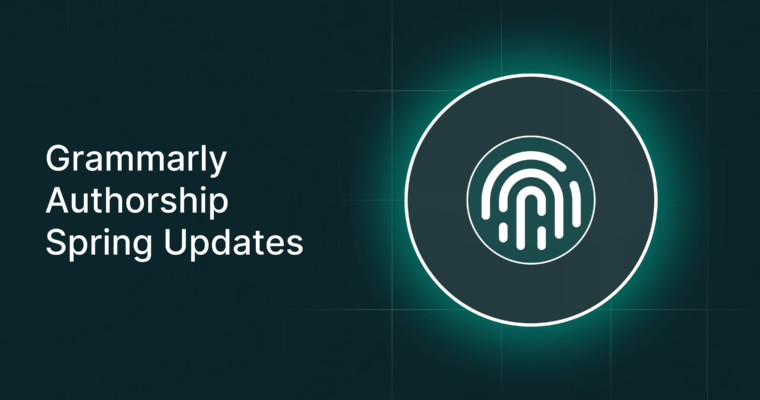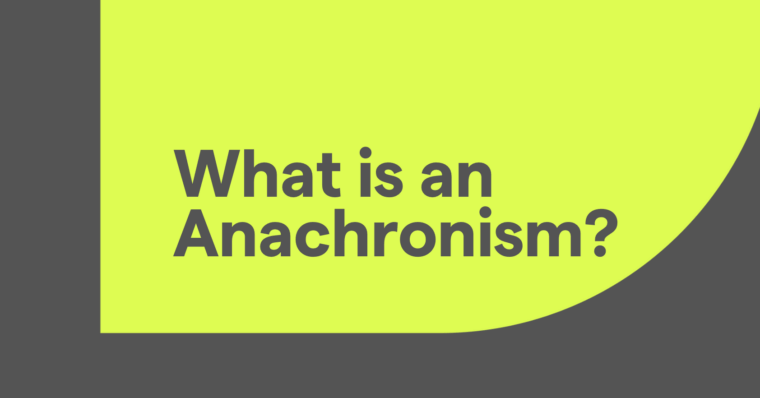
Before you can write a research paper, or begin your research, you may have to write a concept paper.
A concept paper is a short academic paper that explains the research you plan to conduct. It covers your research goals, how you’ll carry out the research, how you’ll collect data, and the questions you aim to answer through your research.
What is a concept paper?
A concept paper is typically a two- to three-page paper that concisely explains a proposed research project. If the paper is for a funding application, it may be twenty pages or longer.
In the paper, they demonstrate why their proposed project is worthwhile. The paper covers:
- Research goals
- Questions the research aims to answer
- The research methods the author will use
- The types of data that will be collected
A concept paper is also known as a research proposal. They may be submitted to investors to secure funding, or a student may submit one to their supervisor before starting a research project. Through reading a student’s concept paper, an academic supervisor can assess their project’s feasibility and, if necessary, suggest adjustments the student can make to improve their project so it’s more realistic or valuable. Similarly, prospective investors can decide whether a project is something they’d like to support. Undeveloped or unrealistic projects can end at the concept paper stage
7 steps for writing a concept paper
1 Title
A concept paper’s title should directly express the paper’s content. Think of it as a preview for the reader. The title can be the question the proposed project aims to answer, or it can be a short statement that summarizes the paper.
2 Introduction outlining problem and gaps in knowledge
In the introduction section, provide an overview of your research project. This should include a short overview of the current state of your research area and existing gaps in this area. After explaining these, state which of these knowledge gaps you aim to fill with your research. This section should also mention any contradictory theories regarding the questions you aim to answer.
3 Mission statement
Your concept paper’s introduction should also include a mission statement. This is a sentence or two that concisely states your research purpose in an engaging way. Remember, the goal is to get your project approved—so your mission statement should communicate why the reader’s approval will benefit your field.
4 Research aim
Your concept paper also needs to address the reason why you’re conducting the specific research you’ve planned. This part, along with the following two sections, are sometimes grouped together as a concept paper’s project description.
In this section, cover the following:
- The reason why your research is important
- The questions you aim to answer through your research
5 Methodology
A concept paper also needs to discuss the methodology you plan to use while conducting your research. This is the strategy or strategies you will use to collect data, such as:
- Surveys
- Experiments
- Case studies
- Interviews
- Observations
This section should also include any ethical concerns that could arise during the research period.
6 Outline of proposed methods and potential impact
After describing your proposed methodology, write a section that discusses exactly how you’ll conduct your research using these methods. Be as specific as possible—if you plan to utilize resources like specialized equipment or collaborate with an expert in your field, include this information in this section. In this section, outline how long you expect the research to take and note the specific milestones you plan to hit during that time frame.
This section should also discuss your research’s potential impact. Discuss who your research and results will impact and how it will impact them. For example, you might conduct a study on undergraduate sleep schedules and publish a paper that supports campus-wide policy changes that promote healthy sleep cycles for students who live on campus.
7 Support
A concept paper also needs to include a section that addresses the project’s budget. The section should explain the overall cost and break it down into individual expenses so readers can see exactly how the money will be spent.
Tips for writing a concept paper
Write to your audience
A concept paper is a piece of academic writing, so use a professional tone. Avoid colloquialisms, slang, and other conversational language. Your concept paper should use the same tone and style as your accompanying research paper.
Write according to your reader’s familiarity with the subject of your concept paper. For example, if you’re proposing an IT project and your intended reader is the head of your university’s IT department, you can use technical jargon they will understand. If the intended reader is somebody in a non-technical role, avoid jargon and make sure you define every vocabulary word that might not be familiar to them. By ensuring your reader understands your concept paper, you increase the likelihood of them approving your project.
Use an engaging, accurate title
Just like a clear, intriguing subject line increases the likelihood of a recipient reading an email, an engaging title increases the likelihood of your reader not only reading your concept paper but understanding it. Choose a title that’s concise (fewer than 15 words or so) and accurately reflects your paper’s content. After reading your paper’s title, your reader should not be surprised by your proposed research.
Keep it to an appropriate length
If you’re a student writing a concept paper for an undergraduate, master’s, or doctoral project, two to three pages is generally the right length for your paper. Don’t worry about getting too detailed about the specifics of your research; a high-level overview is sufficient.
Concept papers meant to secure funding from investors can be longer than academic concept papers.
How is a concept paper different from a research paper?
The main difference between a concept paper and a research paper is when they’re written in relation to a research project. A concept paper is written before its author begins their research, and a research paper is written after they’ve completed it. In other words, a concept paper introduces readers to its author’s academic project, and a research paper explains the outcome of the project.
Concept paper FAQs
What is a concept paper?
A concept paper is often a two- to three-page paper that concisely explains a proposed research project.
When do you need a concept paper?
You need a concept paper to outline a proposed research project. Often, they are part of undergraduate, graduate, and doctoral research proposals. It’s also common for entrepreneurs and individuals conducting scientific and public-service-related research to write concept papers to garner support for their work.
What are the main steps of writing a concept paper?
Write an engaging, accurate title
- Outline the problem you aim to solve
- Write a mission statement
- Explain your research aim
- Explain your research methodology
- Explain your research methods and the potential impact of your work
- Discuss your project’s budget and how it will be allocated
How is a concept paper different from a research paper?
While a concept paper introduces a proposed research project by outlining its purpose, process, and goals, a research paper discusses a completed project in detail.






